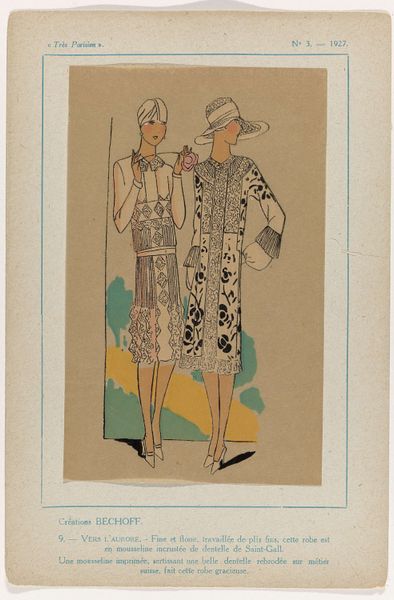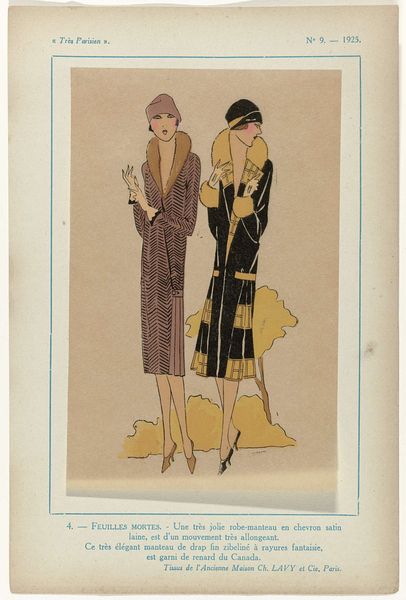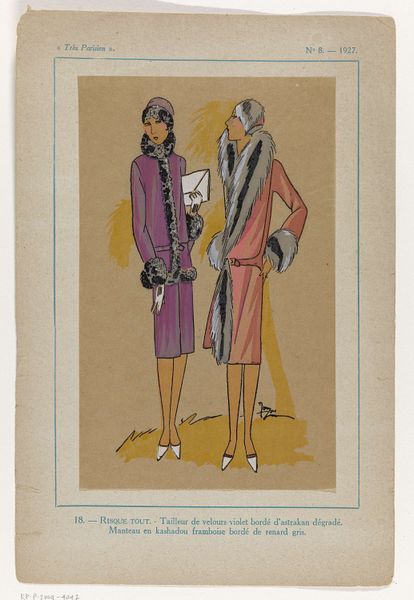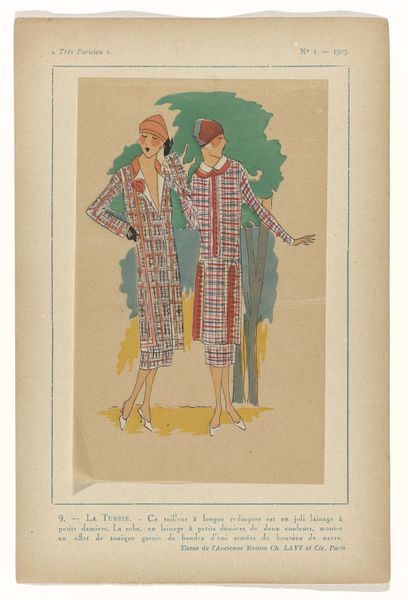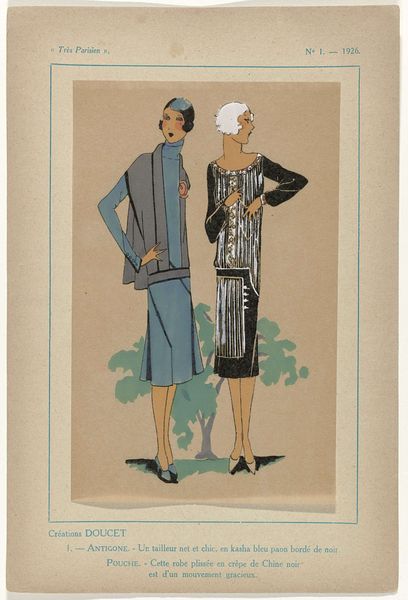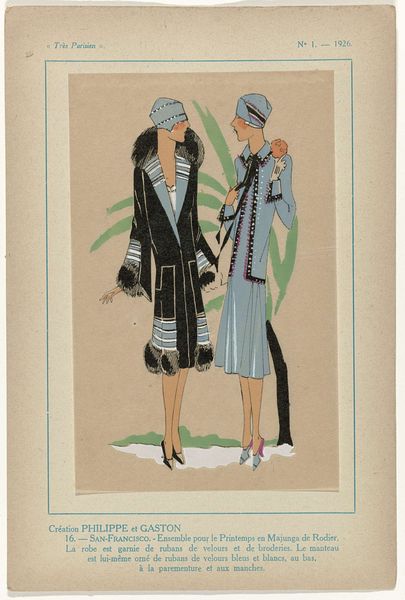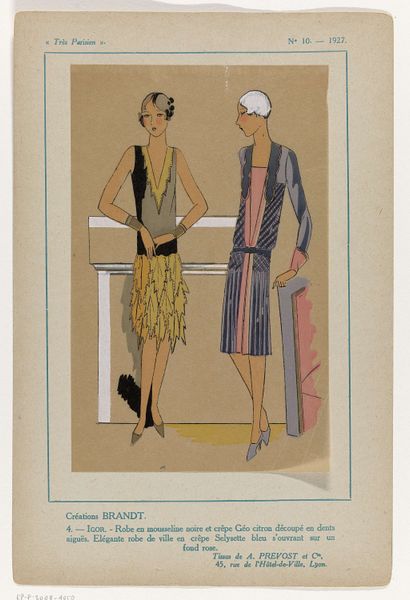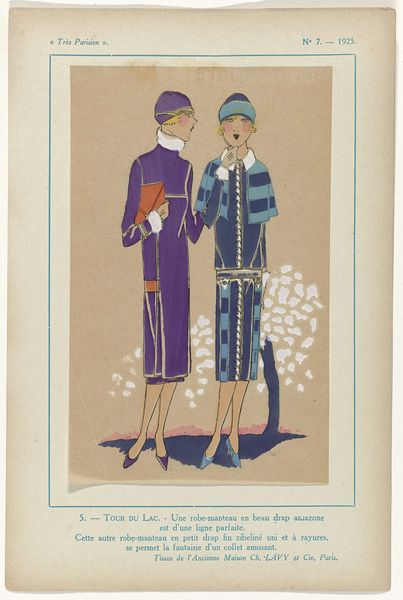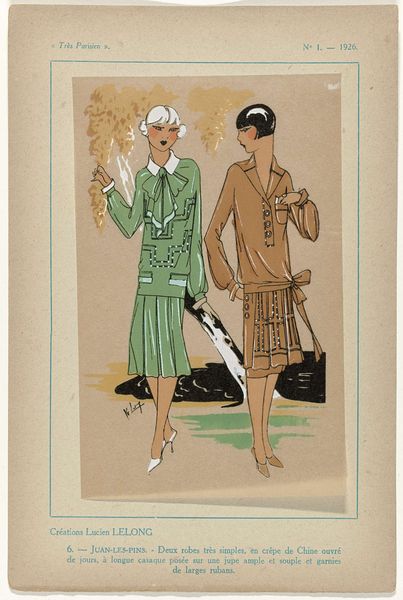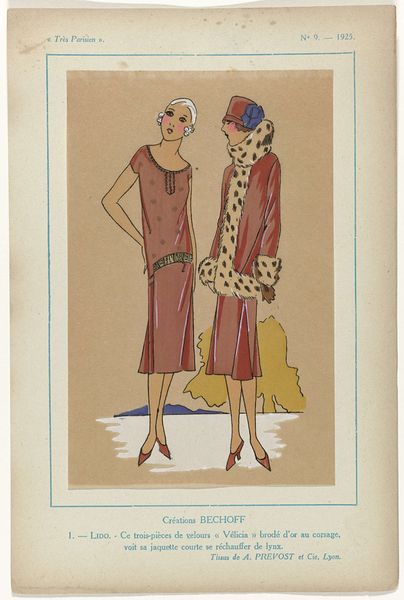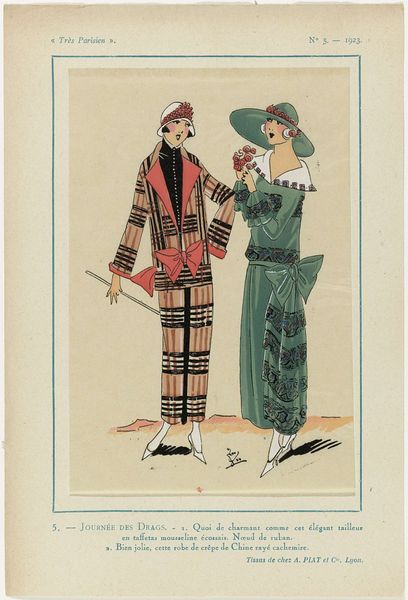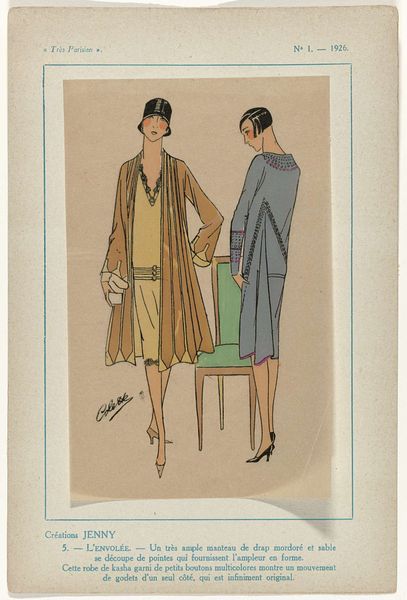
watercolor
#
portrait
#
art-deco
#
watercolor
#
historical fashion
#
watercolour illustration
Dimensions: height 272 mm, width 181 mm
Copyright: Rijks Museum: Open Domain
Curator: Let’s spend some time with “Très Parisien, 1924, No. 10,” a watercolor illustration from 1924 held at the Rijksmuseum. What’s your first take? Editor: Chic, undeniably. These women, posing against those almost cartoonish tree trunks—it screams art deco indulgence, but also a sort of mass production...fashion as disposable art. I see patterns suggestive of textile processes that could hint towards mass manufacturability, if that's even a word! Curator: You’re drawn to the material underpinnings as usual. I see that too. It has something about it where there is mass production going on for something that screams "luxury". Editor: It’s precisely that tension I find so fascinating. These were *modeled* designs meant to be reinterpreted, recut and reshaped into wearable realities. What kind of labor created those gorgeous lines? How available was the textile manufacturing? Who were these designs *for*? These dresses probably do not cost much due to mass production...right? Curator: Mmm. Looking closer at the woman on the left, the coat feels particularly decadent, I could use some nice textiles and nice clothing in my wardrobe - which, by the way, you will be paying for next time around. It’s an interesting take to emphasize production. I almost wonder if focusing on this, makes the experience seem colder? I personally believe the illustrator's goal was to convey elegance. Each line seems carefully considered and brings forward an essence. How does thinking of process add to this feeling, would you say? Editor: Well, "cold" is such a judgmental term! Instead of focusing on how lovely she looks, which is of course intended, there is labor! Think about the workers behind it! This isn’t *just* beauty for the wealthy few, right? Someone designed this and I wonder if the process itself speaks to a type of labor usually left unrecognized... Curator: You’re right. I should get over myself. Let's focus more on what it means for something to become part of a cycle of labor. You've reframed this whole image, bringing attention to its connection to people that wouldn't even get to wear these kinds of fabrics in their lives. Editor: And vice versa! We shouldn’t erase all of them. Materiality shapes how we engage. Anyway, now I'm ready to be that lady to the left and steal some fabric!
Comments
No comments
Be the first to comment and join the conversation on the ultimate creative platform.
